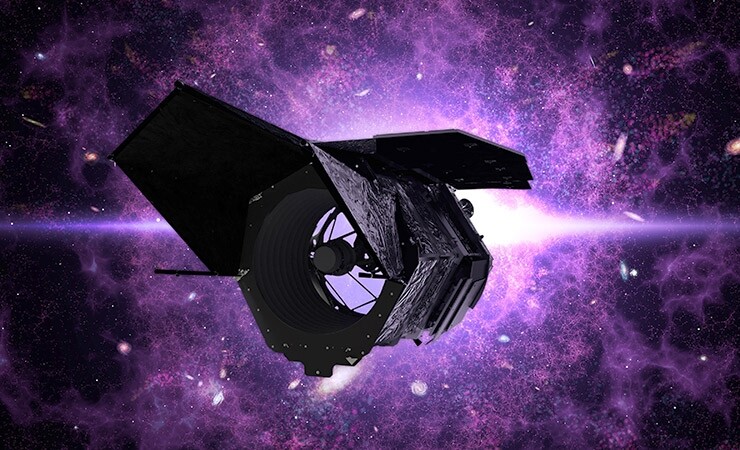
FY21 Budget Outlook: NASA
As NASA enters fiscal year 2021, the foremost question it faces is whether Congress will provide billions in additional dollars the agency says its Artemis program needs to achieve a crewed lunar landing in 2024. NASA Administrator Jim Bridenstine has warned
In spending legislation it passed this summer, the House proposed level funding for NASA with only a fraction of the request for Artemis, arguing the program is “being rushed to meet a politically motivated timeline.” The Senate has not released its counterpart spending proposals, and Bridenstine recently
Comparatively, there is less at stake for NASA’s science programs. The Trump administration has repeated past proposals to cancel some Earth Science projects and the flagship Roman Space Telescope, and it has for the first time proposed canceling the airborne SOFIA observatory. However, Congress has been steadfast in its support for these activities, and the House’s spending bill shows no sign of a course change.
The House’s proposals are detailed in its spending bill


Artemis
Most of the funding needed for the first Artemis landing is to complete development and manufacture of the Space Launch System (SLS) rocket and Orion crew vehicle, and to develop and construct a crewed lunar lander.
The House has proposed more than requested for SLS, which has champions in both the House and Senate. However, it proposed only about $1.6 billion of the $4.7 billion requested for NASA’s Exploration R&D account, which funds the lander among other projects. While the Senate has not made its own proposal, the chamber’s lead appropriator for NASA, Sen. Jerry Moran (R-KS), asked Bridenstine last month
Planetary Science
Lunar science. The House proposes to increase funding for the Science Mission Directorate’s Lunar Science and Exploration program from $300 million to $410 million, short of the $452 million requested. The difference is mostly accounted for by the House’s proposal to increase spending on the Commercial Lunar Payload Services (CLPS) program from $185 million to $213 million instead of the requested $254 million.
NASA uses CLPS to purchase the services of commercially developed and operated robotic landers to convey science and technology payloads to the lunar surface. The first landers are scheduled to launch next fall and so far NASA has lined up

An illustration of NASA’s VIPER, which will search for water deposits near the lunar south pole, emerging from a landing craft developed and operated by Astrobotic. The company has so far received two task orders through NASA’s Commercial Lunar Payload Services program.
(Image credit – Astrobotic)
Mars. The House would provide level funding of $570 million for Mars missions, $42 million more than requested. Following its successful launch this past summer, funding for the Perseverance rover is set to drop from $353 million to $162 million. The House proposes ramping up funding for the nascent Mars Sample Return mission to $250 million, exceeding NASA’s request, and asks the agency to provide a year-by-year funding profile for the mission through a target launch date in 2026. The House would also direct NASA to maintain the $11 million operating budget for the Mars Odyssey orbiter, which NASA had proposed terminating to alleviate budget pressure
Europa. The House proposes to ramp down the Europa Clipper’s budget from $593 million to $404 million, meeting NASA’s request. The flagship mission, which will perform multiple flybys of Jupiter’s icy moon Europa, has passed the peak of its funding profile and its budget should continue to decline ahead of its launch readiness date in 2025. The key question is whether Congress will continue to insist that it launch using SLS or accede to NASA’s request that it use a commercial heavy-lift rocket, which would be cheaper and more likely to be available on time. The House report “strongly encourages” NASA to use SLS but includes language that allows NASA to determine if it must plan for an alternative. By the end of this year, the mission will undergo its critical design review, when the costs of keeping launch options open will escalate
For a second straight year, the House recommends no new funding for a Europa lander mission, but language in its bill does direct NASA to launch one by 2027. The launch date stipulation has been pushed back from even more aggressive schedules mandated when the mission was championed by Rep. John Culberson (R-TX), who lost his seat in the 2018 election. NASA, though, has indicated
New Frontiers missions. The House would meet NASA’s request of $179 million for its New Frontiers program, which funds the most expensive missions that are selected through open competitions and developed by teams from outside the agency. NASA has pushed back
Planetary defense. The House would meet NASA’s request for level funding of $150 million for efforts to detect near-Earth objects such as asteroids and to explore ways to mitigate threats from them. This includes at least $66 million for the Double Asteroid Redirection Test, a mission scheduled to launch next summer that will physically strike a small asteroid orbiting another so that Earth-based observers can study the dynamical effects. The House report does not specify funding for the Near-Earth Object Surveyor Mission, a space-based infrared telescope. Although NASA decided to move forward
Arecibo Observatory. The House report specifies it provides “continued sustained funding for existing ground-based observatories, including the Arecibo Observatory,” in connection with their role in detecting and characterizing near-Earth objects. Arecibo is owned by the National Science Foundation, which is seeking to reduce its share of the operating costs. The report was released before the observatory suffered damage
Astrophysics
Roman Space Telescope. Rejecting the Trump administration’s proposal to defund the project, the House proposes full funding of $505 million for the Nancy Grace Roman Space Telescope, formerly known

An illustration of the Roman Space Telescope.
(Image credit – NASA Goddard Space Flight Center)
Webb Space Telescope. The House would keep the James Webb Space Telescope’s budget level at $423 million as the mission prepares for its long-awaited launch next year. NASA most recently pushed back
SOFIA. In contrast with its other termination proposals, the Trump administration has justified targeting NASA’s Stratospheric Observatory for Infrared Astronomy on the grounds the airplane-mounted telescope’s scientific output is small relative to its high operating costs — a point also backed by a recent audit
Other activities. Although the House would provide nearly $500 million more for NASA’s Astrophysics topline than requested, its support within that for the Roman Space Telescope and SOFIA would leave $716 million for all other missions and programs, well short of the $819 million requested.
Earth Science
PACE and CLARREO Pathfinder. For three years straight, Congress has rejected the Trump administration’s proposals to cancel the Plankton, Aerosol, Cloud, ocean Ecosystem (PACE) satellite and the CLARREO Pathfinder instrument for measuring reflected solar radiation. The House proposes to do so a fourth time and provide the projects with about $145 million and $25 million, respectively. The House report also protects the $10 million budget of NASA’s Carbon Monitoring System, which the administration has previously sought
Earth System Science Pathfinder. The House proposes increase funding for the Earth System Science Pathfinder program from $299 million to up to $377 million, exceeding NASA’s $339 million request. The program supports a portfolio of low-cost missions, instruments, and investigations accommodating new and emerging scientific priorities and measurement capabilities. The House report specifically mentions the Geostationary Carbon Cycle Observatory (GeoCarb), an instrument payload with a target launch date in 2022, noting it will “demonstrate the feasibility of using a commercial communications satellite to host a scientific instrument which will measure vegetation off-gassing and help detect fugitive methane emissions, while also serving as a cost-saving model for future Earth Science research needs.”
Decadal survey projects. The House would provide up to $75 million, nearly double NASA’s request, for early work on up to two missions focused on “designated observables” identified
Heliophysics
The House report provides no specific direction for NASA’s Heliophysics Division. Much of its proposed cut to the division’s topline, from $725 million to $633 million, reflects a temporary funding reduction for the Interstellar Mapping and Acceleration Probe (IMAP). The reduction is related to budget shifting surrounding a new launch-sharing arrangement
Other programs
International Space Station research. This year, NASA transferred
Space nuclear technology. The House proposes steady funding of $110 million for the development of a nuclear thermal propulsion system. NASA, though, is seeking
In-space servicing and assembly. The House proposes to maintain funding at $227 million for a technology demonstration mission known as On-Orbit Servicing, Assembly, and Manufacturing 1 (OSAM-1). The main part of the mission, formerly called RESTORE-L, aims to robotically refuel Landsat 7. Another, recently added
STEM engagement. The House proposes to increase the budget for NASA’s Office of STEM Engagement from $120 million to $126 million. The increase would be evenly divided between the Space Grant program, the Minority University Research and Education Project, and NASA’s EPSCoR program, which seeks to build research capacity in states and territories that traditionally receive a smaller share of federal research grant funds. Congress has consistently rejected the Trump administration’s proposals to shutter the office.


